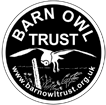Barn Owl pellet analysis
Owl pellet facts & video: Find out all about Barn Owl pellet dissection and how to analyse the contents.
What is a Barn Owl pellet?
(a 4-minute video with Head of Conservation, David Ramsden MBE)
- What are Barn Owl pellets
- Where to find Barn Owl pellets
- Owl pellet storage and preparation
- Barn Owl pellet analysis
- Barn Owl pellet dissection
- Barn Owl pellet contents identification
- Barn Owl pellet analysis and dissection for schools
- Barn Owl Trust pellet dissection pack
- Searching for Shrews project
What are Barn Owl pellets
- Barn Owls are unable to digest the fur and bones of their prey, which they usually swallow whole.
- The indigestible parts are regurgitated (cast up through the beak) in the form of an owl pellet.
- After feeding, producing a pellet takes 6 hours or more.
- After each night’s hunting, an owl regurgitates 1 or 2 pellets.
- Barn Owl pellets are typically about the size of a man’s thumb and black when fresh.
- Pellets often contain the remains of 4 or 5 small mammals.
- Pellet dissection can tell you exactly what a Barn Owl has eaten.
Where to find Barn Owl pellets
Pellets often accumulate at roosting or nesting sites, where owls can hide away and shelter from the weather. Knowing the signs of occupation will help you find pellets and determine if they are from Barn Owls or not. Barn Owl pellets are black when fresh, turning grey as they get older.
Pellet identification chart: Identify the bird pellets you find. Most birds produce pellets, which look different according to what they eat. Or have you found something else entirely – like a fox scat for instance?
More about owl pellet identification on our Barn Owl Survey website.
When collecting pellets from a potential nest site, do take care. Barn Owls are legally protected against disturbance whilst nesting. However, it’s likely that any owl nest is high above you and if you are quietly collecting pellets on the ground you are probably not going to disturb the owls.
Owl pellet storage and preparation
Fresh owl pellets should be thoroughly dried and kept in an airtight container or frozen in an unsealed bag or cardboard box (so they can dry whilst frozen). If moist pellets are stored together they can become a congealed mass of pellet debris. If pellets are stored in a sealed container a number of grubs or small moths may be found once the container is reopened. These are clothes moths and their grubs are completely harmless (except to wool). Freezing kills them.
Barn Owl pellet analysis
In dry, well-used roost sites, lots of Barn Owl pellets can accumulate. Using our owl pellet age guide photo on the right, it’s possible to work out how long Barn Owls have been using the site and how recently the owl was present.
Barn Owl pellets break down with age as clothes moths eat the fur, leaving the tiny bones behind, which can last for many years.
Barn Owl pellet dissection
Pellets can be analysed wet or dry. It is easier to analyse dry pellets, but to extract all of the small mammal bones intact, dried pellets can be soaked in water for 24 hours.
Gently tease the pellet apart using your fingers or tweezers. Although pellets do not smell, (they are not faeces) hands should be washed thoroughly with soap and water after this activity.
Barn Owl pellet contents identification
Many thousands of Barn Owl pellets have been analysed, so we know a great deal about what Barn Owls hunt and eat.
Wild Barn Owls eat mainly small mammals such as voles, shrews and mice. Other less common items include rats, birds and frogs.
The simplest way to identify which small mammals have been eaten is to search for the lower jaw bones, then ‘pair up’ the right and left jaws from each pellet.
The shapes of the bones, particularly the jawbones, can tell you what species of animal the owl has eaten. You can also count how many prey items are contained within an individual pellet.
Take a look at a our photos of owl pellet analysis to help you to identify bones
Barn Owl pellet analysis and dissection for schools
– free* PDF to download. Includes owl pellet analysis diagrams.
*Free for personal and educational use only – copyright Barn Owl Trust.
Barn Owl Trust Owl pellet dissection pack
Contains everything you need for owl pellet dissection – including a real Barn Owl pellet! Natural science straight from the owl’s mouth! Owl pellet analysis is a fascinating activity for adults and children. You can buy the packs from our online shop.
Searching for Shrews
Did you know? Barn Owls can catch and eat the Greater White-toothed Shrew, which is a non-native invasive species in the UK. Find out about our Searching for Shrews partnership with the Mammal Society, and become involved in a citizen science project!
Other relevant pages
Photos of owl pellet analysis – bone identification
Barn Owl hunting and feeding
– what do Barn Owls eat and how do they hunt?
Signs of Barn Owl occupation
– are Barn Owls living in your barn?






